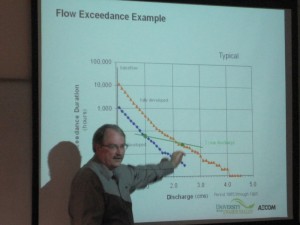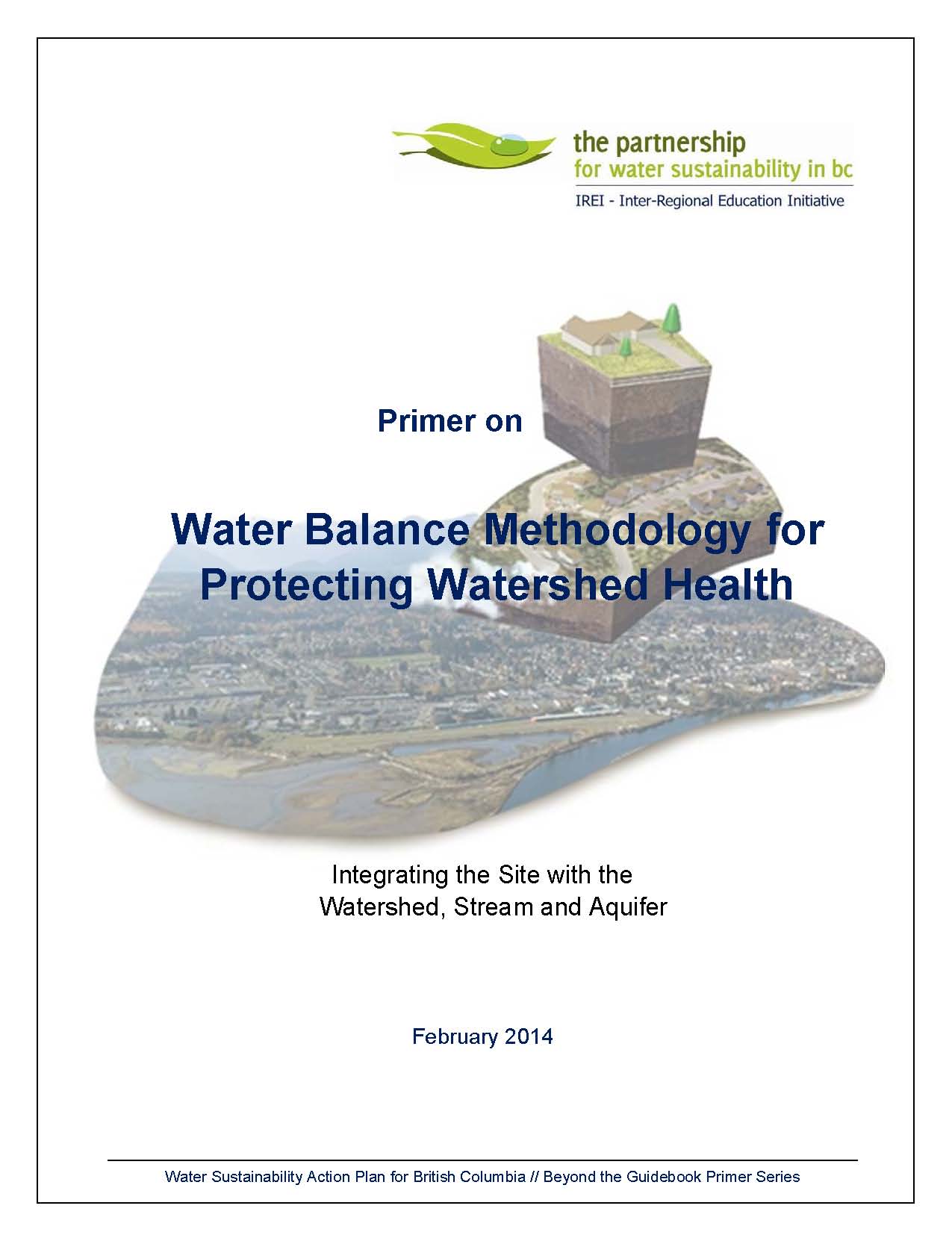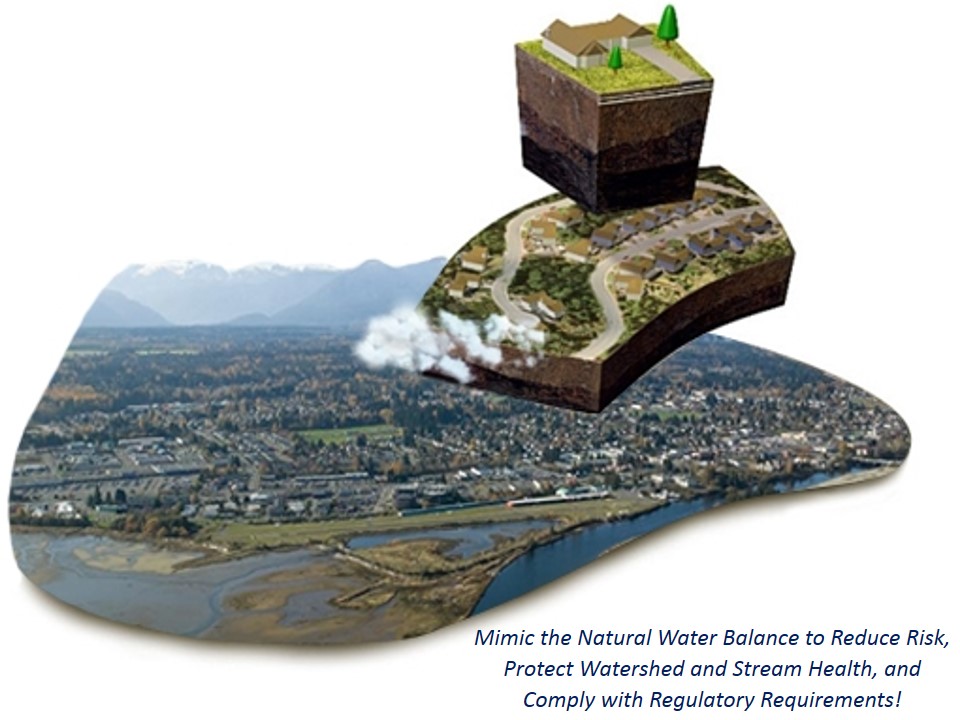NEW GUIDANCE DOCUMENT: Partnership for Water Sustainability releases “Primer on Water Balance Methodology for Protecting Watershed Health”
Note to Reader:
In 2002, looking at rainfall differently led the Province of British Columbia to adopt the Water Balance Methodology, initiate a performance target approach to capturing rain where it falls, and initiate changes in the ways rainwater runoff is returned to streams.
The Province’s decision to embed the Water Balance Methodology in Stormwater Planning: A Guidebook for British Columbia defined a turning point in the regulatory vision for drainage planning, and that is: ‘design with nature’ and forestall problems rather than reacting to problems after they have occurred.
Now, the Primer on the Water Balance Methodology for Protecting Watershed Health provides “how-to-apply it” guidance.
“The innovation of the Water Balance Methodology is in the integration and application of proven scientific and engineering principles,” says Jim Dumont
“When the natural environment is altered by human activities, the slow-release and sponge-like functions of vegetation and soil are lost, such that the balance and flow of water are severely upset,” explains Jim Dumont. He is the Engineering Applications Authority for the Partnership for Water Sustainability in British Columbia.
 “Protection of watershed and stream health ultimately involves maintaining the natural proportion of rainwater entering streams via three pathways: surface flow, interflow (shallow sub-surface flow), and groundwater flow. We describe this goal as mimicking the Natural Water Balance. To replicate natural processes, it is necessary to establish performance targets that define how to ‘slow, sink and spread’ rainwater.”
“Protection of watershed and stream health ultimately involves maintaining the natural proportion of rainwater entering streams via three pathways: surface flow, interflow (shallow sub-surface flow), and groundwater flow. We describe this goal as mimicking the Natural Water Balance. To replicate natural processes, it is necessary to establish performance targets that define how to ‘slow, sink and spread’ rainwater.”
“Released last week at a forum hosted by the Cowichan Valley Regional District, the Primer on the Water Balance Methodology for Protecting Watershed Health is the fifth in the Beyond the Guidebook Primer Series and provides practitioners with step-by-step guidance to quantify three watershed-based and integrated performance targets, namely: storage volume, infiltration area and flow release rate.”
“Of all the information and words about stream and watershed health, the following statement distils the reasons why I am so passionate about advancing engineering in step with the other sciences:
- The Water Balance Methodology provides a logical and straightforward way to assess potential impacts resulting from urban development; and analytically demonstrate the effectiveness of the methods proposed for preventing and/or mitigating those impacts.”
“The innovation of the Water Balance Methodology is in the integration and application of proven scientific and engineering principles. Breakthroughs in science-based understanding occurred in the mid-1990s. Yet engineering practice generally did not incorporate this understanding. The Water Balance Methodology has addressed this historical oversight and is being enhanced over time to incorporate fresh insights,” concludes Jim Dumont.
To Learn More:
Provincial direction is to mimic the natural Water Balance to protect and/or restore stream and watershed health. This is the “designing with nature” strategy. Commencing in 2007, “Beyond the Guidebook” is an ongoing initiative to inform and educate infrastructure, land use and environmental professionals about a watershed-based approach to rainwater management and green infrastructure solutions.
Click on Primer on the Water Balance Methodology for Protecting Watershed Health to download a copy of the fifth in the “Beyond the Guidebook Primer Series”.



